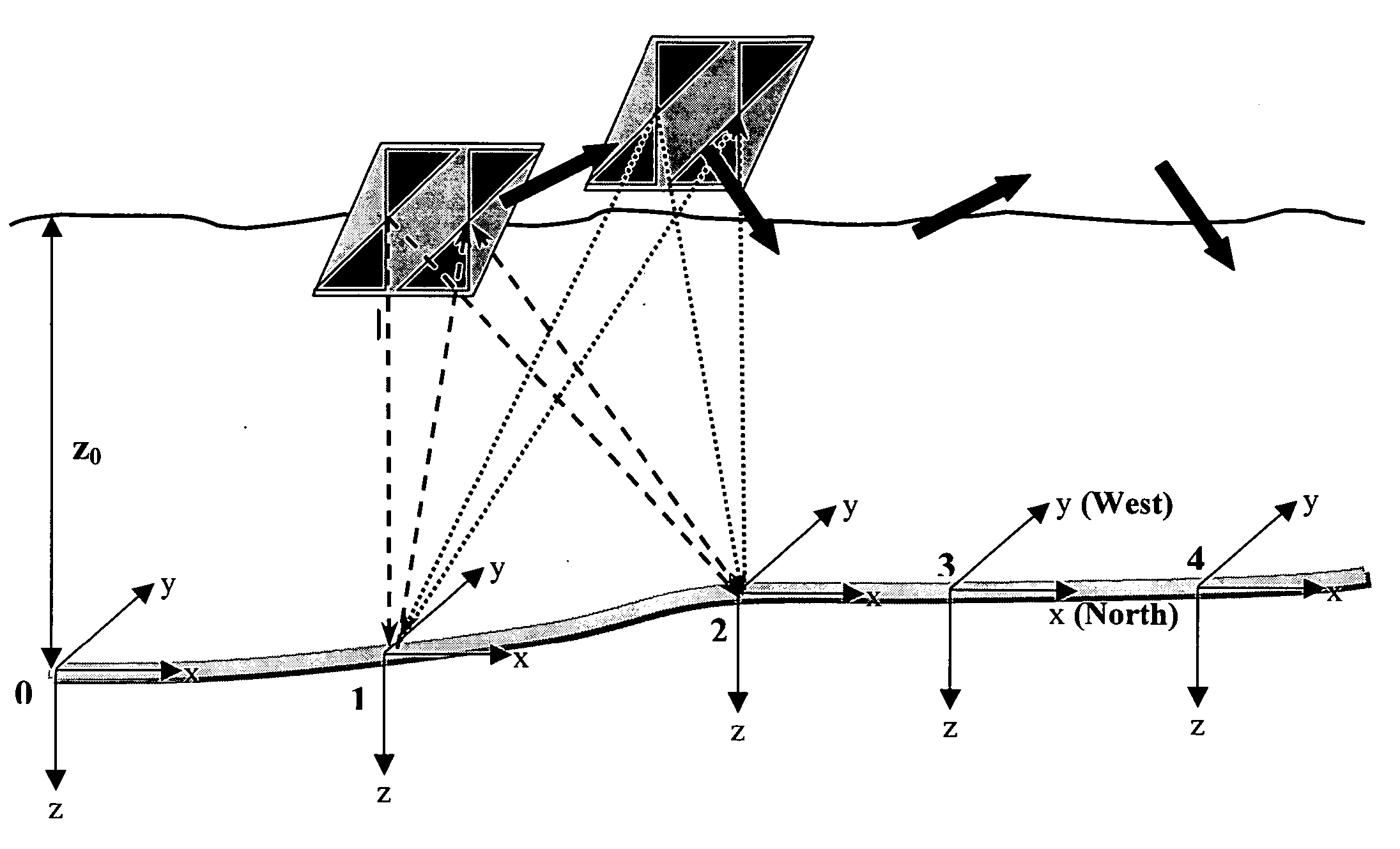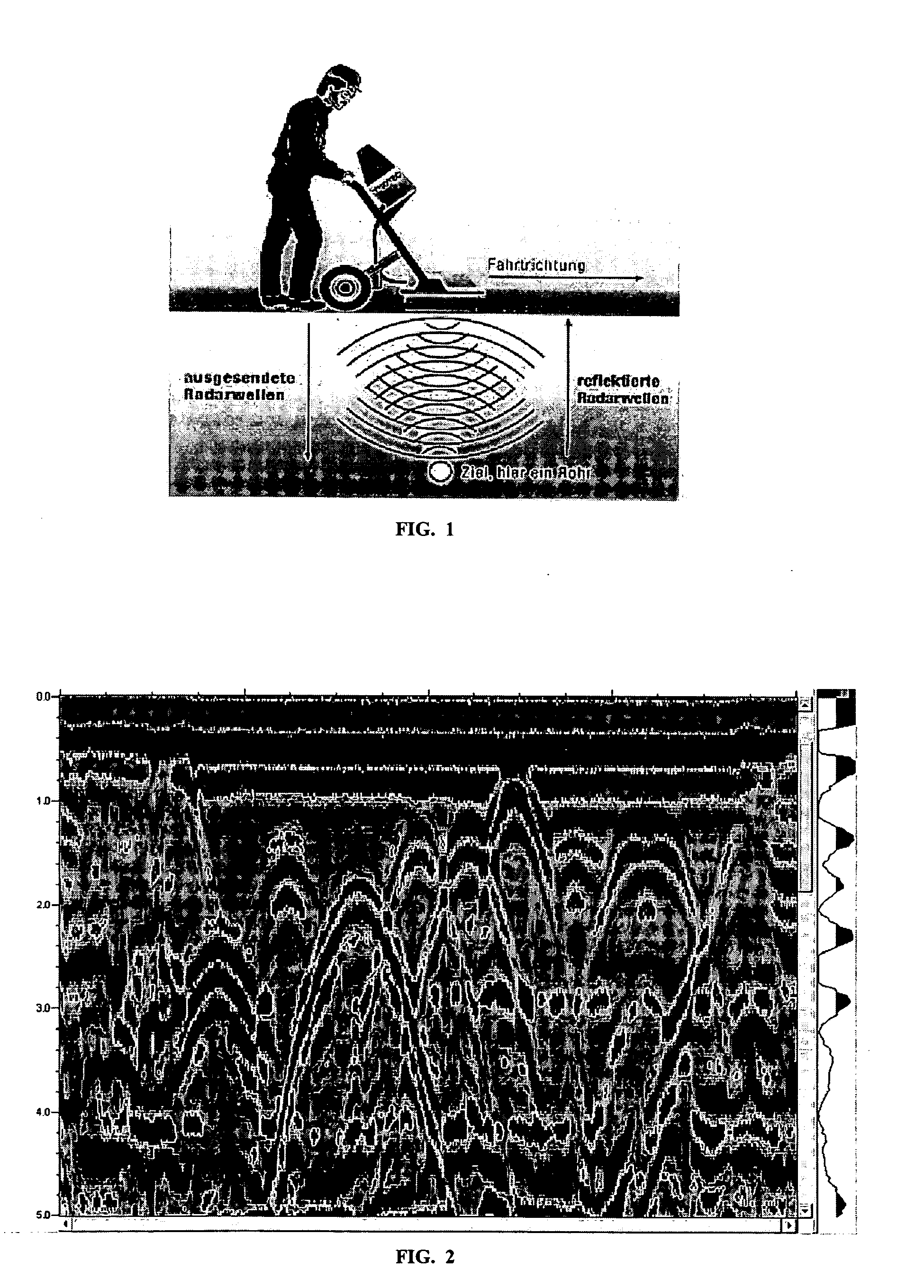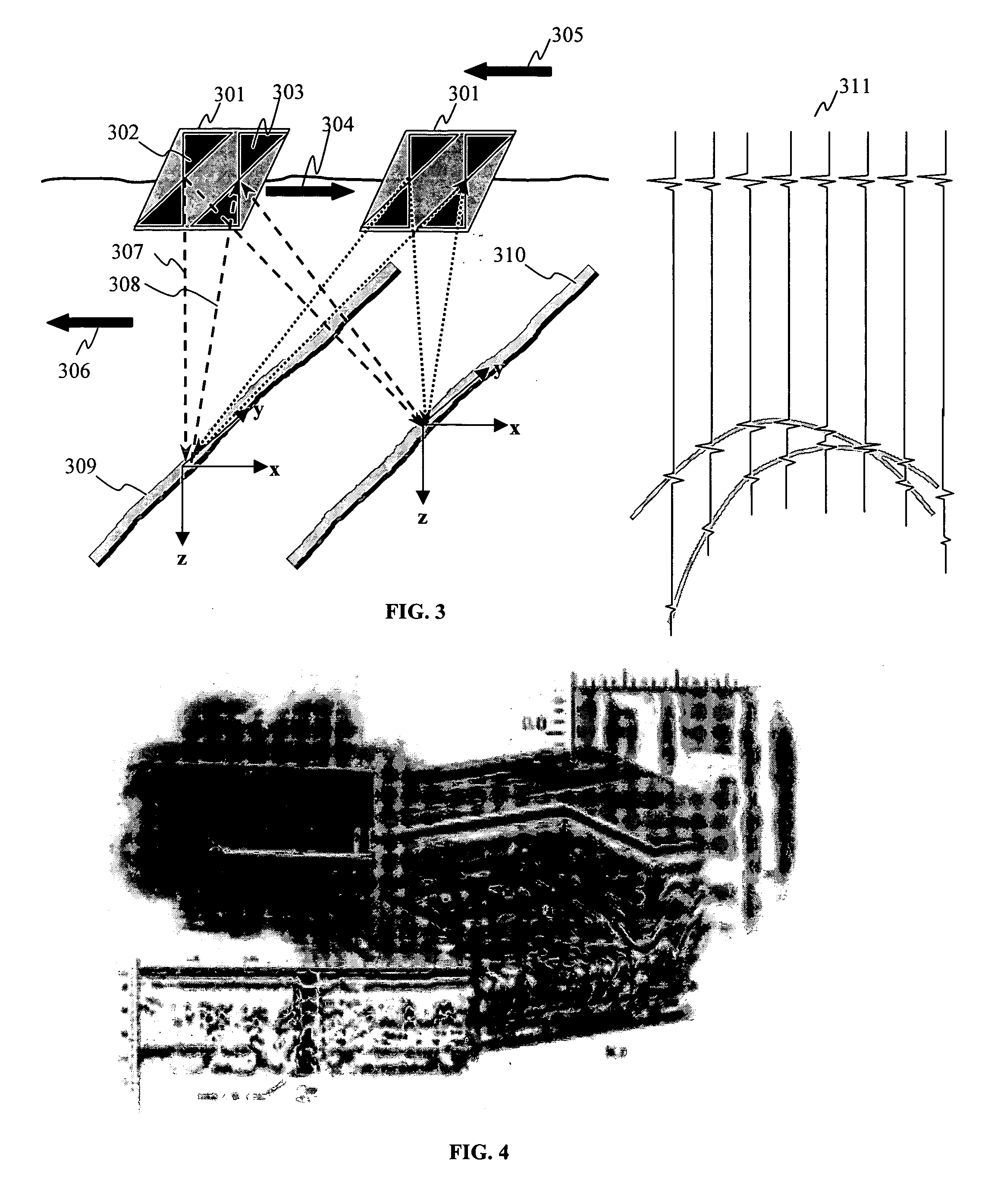Centerline and depth locating method for non-metallic buried utility lines
a technology of non-metallic underground utilities and depth locating methods, which is applied in the direction of reradiation, detection using electromagnetic waves, instruments, etc., can solve the problem that the diameter of utility lines is not normally measurabl
- Summary
- Abstract
- Description
- Claims
- Application Information
AI Technical Summary
Benefits of technology
Problems solved by technology
Method used
Image
Examples
Embodiment Construction
[0028] Line locator 500 in FIG. 5 offers both EM and GPR location methods and thus is a dual mode locator for both metallic and non-metallic utility lines. Out of view of the locate technician operating locator 500 is a buried utility line. If an active EM signal from a transmitter (not shown) has energized the line, the induced magnetic field is essentially concentric and five coils 503 (bottom reference), 505 (left / right, includes two coils), 504 (top), and 506 (guidance) generate received signals that are processed using the methods previously disclosed in U.S. patent application Ser. No. 10 / 622,376, which is herein incorporated by reference in its entirety. Display 501 and speaker 507 alert the user to the signal strength, left / right deviation from centerline, depth to the conducting line, and a preview of any upcoming turns in the line (using a guidance compass display 604, FIG. 6). The depth is calculated by the ratio of signal levels between the top and bottom coils, using an...
PUM
 Login to View More
Login to View More Abstract
Description
Claims
Application Information
 Login to View More
Login to View More - R&D
- Intellectual Property
- Life Sciences
- Materials
- Tech Scout
- Unparalleled Data Quality
- Higher Quality Content
- 60% Fewer Hallucinations
Browse by: Latest US Patents, China's latest patents, Technical Efficacy Thesaurus, Application Domain, Technology Topic, Popular Technical Reports.
© 2025 PatSnap. All rights reserved.Legal|Privacy policy|Modern Slavery Act Transparency Statement|Sitemap|About US| Contact US: help@patsnap.com



